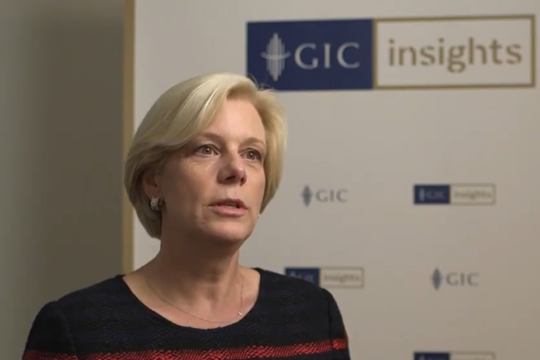
Quarterly EPS guidance is inherently short-term, but more companies returned to the practice last year.

Quarterly EPS guidance is inherently short-term, but more companies returned to the practice last year.
By Allen He and Devin Weiss
While the COVID-19 pandemic significantly reduced the number of public companies issuing quarterly guidance to their investors, some companies seem to be returning to old habits.
Year-end 2021 results show that 21.4% of companies on the S&P 500 issued quarterly earnings guidance, up from 16.2% in 2020. This follows a 30% decrease (from 23.4%) between 2019 and 2020.
Prior research from FCLTGlobal has established that quarterly earnings per share (EPS) guidance is an inherently short-term practice detrimental to a firm’s long-term performance. More specifically, that research demonstrated that issuing quarterly guidance:
Percentage of S&P 500 Offering Quarterly EPS Guidance
Taking in the bigger picture, quarterly guidance has dropped over the past decade, from 36% in 2010 to 21.4% in 2021. While companies were slowly moving away from the practice, the sudden increase indicates a need for viable alternatives to communicate plans and performance to shareholders.
In recent years, companies have increasingly chosen to move away from quarterly earnings guidance by providing a with a long-term roadmap focused on the fundamental economic drivers of the business and long-term strategic goals, and sharing management’s outlook for KPIs tied to the company’s long-term strategic goals to frame the investment opportunity for shareholders.
Roadmaps have a proven record at leading companies, and evidence suggests that the majority of investors (especially long-term investors) prefer this approach. By focusing on key elements of performance such as competitive advantages, long-term objectives, and a strategic plan matched with clear capital allocation priorities, companies can shift the investor relations conversation from quarterly “hits” and “misses” toward how companies create long-term value.
Fortunately, the brief recurrence of quarterly guidance in 2021 coincides with higher levels of long-term guidance, possibly the start of a continued trend in the later stages of the pandemic.
Percentage of MSCI ACWI Offering Annual and Long-term Guidance
The manner of communications between companies and investors are as important as ever before, especially as priorities for many businesses have shifted to global issues like climate change and pandemic response. However, quarterly guidance remains an inadequate method to communicate strategy in these areas. Rather, having a long-term roadmap in place builds buy-in from investors who rank value creation over immediate returns. As we look ahead in 2022, companies preparing for the long term would benefit by adapting their investor communications accordingly.

Earnings Guidance | Video
25 September 2017 - CEO Sarah Williamson shares her thoughts on quarterly guidance and companies' and investors' on going focus on quarterly results.

Investor-Corporate Engagement, Earnings Guidance | Report
23 October 2017 - Since 2005, research has consistently found that the vast majority of corporate executives think that short-term pressure is growing, that it is changing their business decisions, and that those changes are destroying value. One effective way that corporations are combating this phenomenon is by moving away from quarterly earnings per share (EPS) guidance and instead providing investors with a long-term road map focused on the fundamental economic drivers of the business tied to management’s outlook on critical key performance indicators (KPIs). As we highlighted in our...

In the News
8 April 2021 - Companies that provide more frequent and regular guidance often experience higher volatility during earnings season, as short-term investors speculate on forthcoming results.